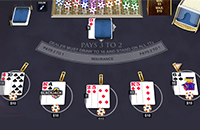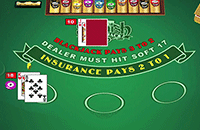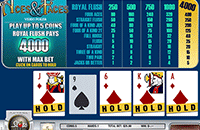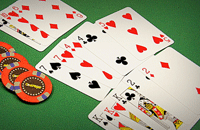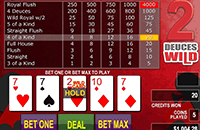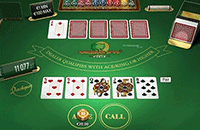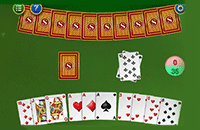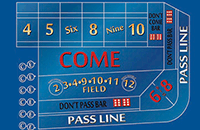Counting Cards – How To Count Cards In Blackjack
What is Counting Cards?
Counting cards is the art is keeping track of cards that have been dealt, with the aim to increase the odds in favour of the player.
The most common game for Counting cards is usually in Blackjack, especially when more than one shoe or deck of cards is used.
How advantageous is Card Counting?
It has featured in a number of films over the years and several of them make it look like it is a sure-fire way to win. Let’s face it though, if that was the case, people would be doing it all the time and casinos would either have made changes to counter-act it or they would have gone bust by now.
Yes, it can help you make decisions in a hand if you know if there is an above average or below average number of cards with the value of 10, Aces or low value cards.
However, the edge it gives the player over the house is small at around 0.5% to 1.5% – and many players don’t feel that it is worth the effort.
How to Count Cards?
Now we begin counting. There are many systems available and they fall into two general categories: balanced and unbalanced. Unbalanced counts, like the KO (Knock Out) system were designed to eliminate true count conversion. Generally speaking, the easier a system is to use the less effective it is; sometimes the difference amounts to splitting hairs, but there is a difference. We are going to use High-Low for this example as it is a simple balanced count, and is perhaps the most widely used system. High-Low falls somewhere in the middle of the pack for playing efficiency. We would suggest using this as your counting method at first. Switching to a more complicated system should not be hard once High-Low is mastered, and stepping down, as it were, to a simpler count will be very easy.
High-Low Card Counting
In High-Low the 2-6 are valued at +1, and the 10s and Aces are counted as -1. Note that there are the same amount in each group: 2,3,4,5,6 and 10,J,Q,K,A. The 7,8,9 are neutral in this count and our eye should be trained to not even see these for counting purposes, for they have no bearing on the count. If the low cards are good for the dealer why are they counted as plus value? Because when we see that low card come out the ratio of high to low cards remaining has changed slightly in our favour.
We start with a deck of cards, flipping them over one at a time and keeping the running count. If they come out 8,K,3,3,6,2,7,A we would count 0,-1, 0, +1, +2, +3, +3, +2. At the end of the deck we should come out at “0”. We won’t, at least in the beginning. Keep practicing until you do come out even at the end, every time, and gradually build speed. Eventually we will want to approach 25 seconds running the deck down one card at a time while maintaining accuracy. This speed will guarantee that no dealer alive can spread cards faster than we can count.
When proficient at this try pulling a card out of the deck, face down. Set it aside. After running the deck “guess” what the remaining card is. Your validation will come when you say, “It has to be a ten or an ace,” and then flipping it over to find yourself correct.
Next we’ll flip the cards two at a time. We often see this in “pitch” games, that is, hand-held single and double deck games. On a bust the dealer flips up the player’s two hole cards. It’s a good idea to learn to disregard “matching pairs” like Q, 5, as they cancel each other out. The less we have to deal with the better, and by not allowing our eye to register these “matched pairs” we will streamline our counting.
In actual play there are many individual styles of counting the cards. In a face-up shoe game some people advocate waiting until the second card is dealt to each hand and counting the hands as whole units, as often a hand will cancel itself out, i.e., 10-6, or two consecutive hands will: K,10 – 3,5. Other folks insist it’s easier to count the cards as each one comes out. Try both methods and find what works best for you. In a pitch game it’s a bit different. Count your cards and the dealer’s up card first, then all exposed cards from hits, splits, doubles, and busts as they happen. Next count the dealer’s hole card and subsequent hits. As the dealer exposes the remaining hole cards one hand at a time a quick glance should suffice to carry the count forward. Practice for the game you intend to play but don’t neglect the other. Your favoured game might not be playable because of crowds, bad rules, etc.
Speaking of rules in general, don’t play under bad conditions. If the only game in your area is a six-deck with two+ decks cut off – save up and go to where the games are better. Normally this would automatically mean Las Vegas, but over Super Bowl weekend there I observed a double deck game where a deck-and-a-quarter was cut off, a horrible stunt by the management. At another place that normally had a good single deck game they were dealing three hands in heads-up play, when five and sometimes six is the norm. I overheard some dealer-talk about juicing the games for the Super Bowl crowd. The point is to shop for good penetration and to walk when it’s not there. Penetration is a key element in winning.
We should be able to master the above two drills in about 20 hours of dedicated practice; as always, your mileage may vary.
Card Counting Strategy
Let’s take a look at all options available to you and see what you should do when there are a lot of 10’s available and why.
Stand: As a Player, you can choose to stand on totals from 12 to 16, which the Dealer cannot do.
When there are a lot of 10’s left in the shoe, the chances of busting increase and therefore it is recommended that you play more conservative and Stand when there is a chance of Busting more often.
Insurance: Whereas Insurance would normally be considered a bad bet, if there are a higher than average number of 10’s available, it is worth considering. On average, a 10 will be drawn from the shoe around 30.8% of the time. If this increases to 33.33, so 1 in 3 cards have a value of 10, then the edge the house has is removed from the bet. Anything above 33.33% puts the bet in the Players favour as the potential returns outweigh the potential losses.
Doubling: A high majority of the time if a player Doubles, they would like a 10. If there are a high number of 10’s in the shoe, it follows that their chance of hitting one increases. Therefore, you should look to maximise your bets, including Doubling where your total is higher than the Dealers and there is no chance of Busting. For example, a total of 9 versus the Dealers 8.
Surrender: If there are a lot of 10’s available and it would lead to you Busting, then a viable alternative when available is to Surrender. Yes, you lose half your stake with no chance of winning the hand, but the odds are higher than average that you will Bust anyway, so by Surrendering you at least get half of your stake back as opposed to losing the lot.
Splitting: Splitting would normally happen when you have a reasonable size card and the Dealer has a low card. Again, it is all about maximizing your bets when the Dealer has a 5 or 6, in a shoe with above average 10’s, you can also look to Split against the Dealers 3 and 4, as there is a higher chance they will bust and you still have a chance of getting a good total as well.
Watching Your Bet Range: Watch your bet range, or spread. While everything mathematical tells us to jump our bet from, oh, $5 to $100 this is the surest way to get unwanted attention in the least and outright barring at the extreme. To survive we must unfortunately limit our spreads; the pits are not stupid – they basically know how counting works.
In pitch games this usually means spreading about 1-5 units; in shoe games we will get away with much larger spreads, say 1-8 or even two hands at 6 each. Generally counters step their bets up with the count: 1 unit at negative or 0, then incrementally up with the count. Read books like Stanford Wong’s Professional Blackjack and Don Schlesinger’s Blackjack Attack for more input in this area. In fact read everything you can find from these two authors as well as Snyder, Uston, and other accepted experts. Read, then read some more.
At this point it would be prudent to take it slow, and play at the lowest tables you can find. Fine-tune your game and act. There are still one-dollar tables in Nevada. Read the suggested authors – bankroll is very important. Even spreading 1 to 5 in silver a counter needs a bankroll in the hundreds. Never play under-financed – it’s self-defeating. Wild swings happen all the time in this game, and we don’t win consistently – the proficient counter wins in the long run.
Should You Count Cards?
If you are like the average, recreational Blackjack player, you may play Blackjack in a casino a few times per year and you want to play in a relaxed, friendly atmosphere and have fun.
But at the same time, you don’t want to play a game where the odds are greatly against you and you want a good chance of beating the house on any given day. And you’re willing to invest a reasonable amount of time learning to play properly.
Does this describe you? If so, you’re not alone. About 99% of Blackjack players can very likely be described as “recreational” players. If you invest the few hours it takes to lean Basic Strategy and good money management you will reduce the casino’s edge down to about a half percent. This is the closest to playing even with the house that you’ll find in any game in the casino.
However, for those of you for whom playing almost even with the house is not good enough and you want the edge, you must become a card counter.
It is an irrefutable fact that you can have an advantage over the casino in Blackjack by counting cards. There are dozens of books on this subject and card counting has been mathematically proven, literally thousands of times, as a method to more accurately determine the odds that your next hand will have favourable cards.
The long-term advantage gained by card counting is about 1%, versus the one half percent disadvantage from simply playing Basic Strategy.
So why isn’t everyone a card counter and why are casino Blackjack profits at an all- time high and climbing?
Two reasons:
* Casinos have made the playing conditions very difficult for card counters.
* Becoming an expert card counter requires hundreds of hours of practice and a monstrous bankroll. Even then, a small lapse in concentration at the table will wipe out the small advantage gained by counting.
This does not mean there aren’t professional Blackjack counters who make a living playing Blackjack because there are.
However, to be able to make a full time living by counting cards, you’ll need to be able to do the following:
* Spend hundreds of hours, and play thousands of hands, to learn to count cards expertly, plus learn the many subtle variations to hitting and standing that vary with the count.
* Play 100 hours plus per month of actual table time, with average bets of $50 to $100. You can probably double this amount of time or more to allow for breaks, finding good tables, changing tables and casinos frequently, travel, etc.
* Learn how to constantly conceal your card counting skills when playing, to avoid being asked to leave.
* Play at odd hours, usually very late at night into the early hours of the morning because it’s best to play one-on-one with the dealer or with as few other players as possible at the table.
* Change tables and casinos frequently, to avoid being detected.
* Have a very large bankroll. As a professional, you will need about 300-500 times your average bet, to be able to take advantage of the count by stepping up your bets dramatically and playing multiple hands, while also being able to weather the wild swings in your bankroll that will frequently happen in the short run. This translates to a working bankroll of about $30,000 – $50,000, based on average bets of $50 – $100, which is what you’ll need to earn a full time living.
If you are indeed able to do all of the above flawlessly, then congratulations! You are an expert card counter and you will make money in the long term.
For the 99% of us who are recreational players and unable or unwilling to make the substantial effort required to count cards expertly, then playing Basic Strategy is the next best thing. This will give a very low edge against you of about one half of one percent, while still providing the chance to come away a winner in the short term.
Learning perfect Blackjack Basic Strategy takes only a few hours and can be mastered by virtually everyone. You can play any table, any time, for as long as you like, without having to worry about being noticed by the Pit Boss. In fact, the Pit Bosses will welcome you with open arms. You’ll still have the lowest odds against you of any table game in the casino and you’ll have a fighting chance of beating the casino with a good run of cards.
This is the best way to play for casual, recreational players who want to have fun but not lose their shirts.
Don’t get me wrong: the bottom line is that if you want to be a serious, dedicated Blackjack player, who gets the most thrill out of beating the casino and are willing to work hard to do it, then by all means learn card counting.
However, for the recreational player, Blackjack should be easy to learn and fun.
With Basic Strategy, it is.
Blackjack References:

